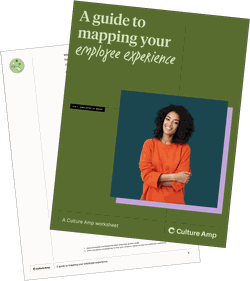
11 high-impact questions managers should ask remote employees

At LifeLabs Learning, we study managers. We’ve found that managing an employee virtually requires the same skills as managing an in-person employee, but with a few added twists. One of these twists includes asking the right questions at the right time. Why? A good "question set" helps managers zoom in on issues that are often unspoken, allowing managers to create a better employee experience.
Here are 11 questions from our research that you can use to create better dynamics with your remote employees, faster. You can ask these during 1-on-1 meetings, or even in employee engagement or pulse surveys. Ask these questions when you first start working with any remote employee, or at regular intervals (e.g., every half year), to check in on changes.
1. How are you adapting to working remotely?
Follow-on questions:
- What challenges are you experiencing in comparison to when you worked in the office? (Only if they transitioned recently.)
- What do you like best and least about working remotely?
- What is the high point of a typical day (for example, yesterday)?
- What is the low point of a typical day (for example, yesterday)?
What this question uncovers:
Motivation analysis: This question helps you determine what motivates and demotivates your direct reports. Learn more by asking for more context in the survey comments. For example, if they say, "My high point is getting into a flow state with a project," ask, "What creates a flow state for you?"
2. What is your work setup like?
Follow-on questions:
- What equipment or process improvements would make things 10% better?
- What technology issues have you encountered?
- Moving forward, what would your ideal workstation be? (Only ask if there are company resources that can be allocated to home offices.)
What this question uncovers:
Environment analysis: This question helps you listen for ways to optimize setup and workflow. While doing so, you can also arrange for your remote employee to interview other remote employees from cross-functional departments to learn their setup tips.
3. What is your daily routine?
Follow-on questions:
- What do you do to take breaks/ recharge?
- Are you able to fully disconnect when on vacation or at the end of the day?
What this question uncovers:
Energy management: Listen for spots to help optimize time boundaries. Since work and life are blended, a big danger for remote employees is burnout. When working in person at the office, it’s easier to have delineated boundaries for starting and stopping work.
4. What has your experience been with working remotely in the past?
Follow-on questions:
- What were some challenges in your previous setups?
- What were some of the learnings you had?
What this question uncovers:
Level of support needed: There is a presumption that working remotely is easy – one simply does what one would normally do, but at a different location. This isn’t true. What we’ve found in our research is that working remotely requires a unique skill set that gets honed with time, including over-communication, clarifying expectations, assertiveness, proactivity, and more. Asking about prior experience with remote work helps you gauge your direct report’s skill sets and determine if more guidance or training is needed to set them up well for success.
5. What challenges do you feel remote workers have compared to those in the office?
Follow-on questions:
- What could make things easier?
- What benefits/advantages do remote workers have compared to those in the office?
What this question uncovers:
Perception/fairness markers: The human brain is wired to track comparisons between conditions, including in this case in-person vs. remote dynamics. Sometimes remote employees feel more is happening at the office than really is (e.g., team meetings that they are not a part of, benefits they miss out on, etc.).
This question helps you surface unspoken issues and re-set expectations if there is a feeling of misbalance. This includes a conversation around perks. The downside of working remotely is getting access to things like free snacks or onsite company celebrations, but the positive trade is flexibility, autonomy, no need for a commute, etc.
6. Would you say our meetings are remote-friendly?
Follow-on questions:
- Can you hear and see your team members well?
- On a scale from 1-10, how easy is it for you to contribute during a meeting?
What this question uncovers:
Meetings culture: Team meetings are often harder for folks who are dialing in, yet they are easy to optimize. This question will help you hear, from your remote employee’s perspective, small optimization ideas
As an example, one easy hack LifeLabs Learning has found to quickly improve perceived meeting quality (PMQ) is to have each person in the in-person meeting dial in using their laptop and laptop camera and a Jabra mic for the room. With this, all people in the in-person room can speak to each other like normal, but the remote person can see a close-up view of each person who is speaking.
7. Who do you connect with most often at work?
Follow-on questions:
- Which coworkers or departments do you wish you had more connection with?
- Who do you go to when you need support or have process suggestions or improvement ideas?
What this question uncovers:
Support network: When working remotely, it is harder to make connections, yet an essential brain craving for all humans is to feel like we belong. Asking, "Who do you connect with most often?" and the follow-up questions help you realize if your direct report needs help building out their network.
Creating relationship capital for your direct reports is easy: You can link them to other people doing similar work, find ways to make their work more visible by creating demos, or set them up for informational interviews with relevant departments.
8. How do you feel about how often you visit the office?
During the pandemic, this question could be replaced by “How do you feel about the number of one-on-one and group meetings you have on a weekly basis?
Follow-on questions:
- Is this the right amount or would you like it to be more or less often?
- When you meet with other teammates, do you/ they turn your camera on?
What this question uncovers:
Belonging: This question helps you uncover how your direct report feels about the amount of contact they get and allows you to explain decision criteria around in-person gatherings. Having the right amount of in-person time matters when working from afar. Our research shows that "frequency beats length" when it comes to having contact. What this means is that flying a direct report in for in-person time is important, but having cameras on in order to see each other frequently is even more important.
9. What are some things your prior managers did that you liked?
Follow-on questions:
- What’s something you didn’t like?
- What’s something I could do 10% better?
What this question uncovers:
Managerial relationship: This question helps you understand how to work best with your employees. It opens feedback lines by normalizing that your team cares about optimizing work dynamics. It also helps you improve one-on-one meetings for the future.
10. How consistent are our information systems?
Follow-on questions:
- Which apps do you most use in your daily workflow? When do you use Slack, text, Jira, etc.? When do you feel confused about which systems to use?
- Where are we consistent/inconsistent as a team?
What this question uncovers:
Communication systems: When working remotely, it is particularly important to know which medium to use for which type of information. This question helps assess confusion spots in the system.
11. What do you want to learn more about regarding our team or company?
Follow-on questions:
- Has any news surprised you recently?
- How included do you feel in team decisions?
What this question uncovers:
Information flow: When working remotely, people sometimes feel out of the loop. This question helps you hear if they feel or are excluded. You can then optimize systems or explain the context.

Want to map your organization’s employee experience?
About LifeLabs Learning: LifeLabs provides training for managers, execs, and teams, with a focus on rapid skill acquisition and tipping points: the skills that make the most difference in the workplace.




